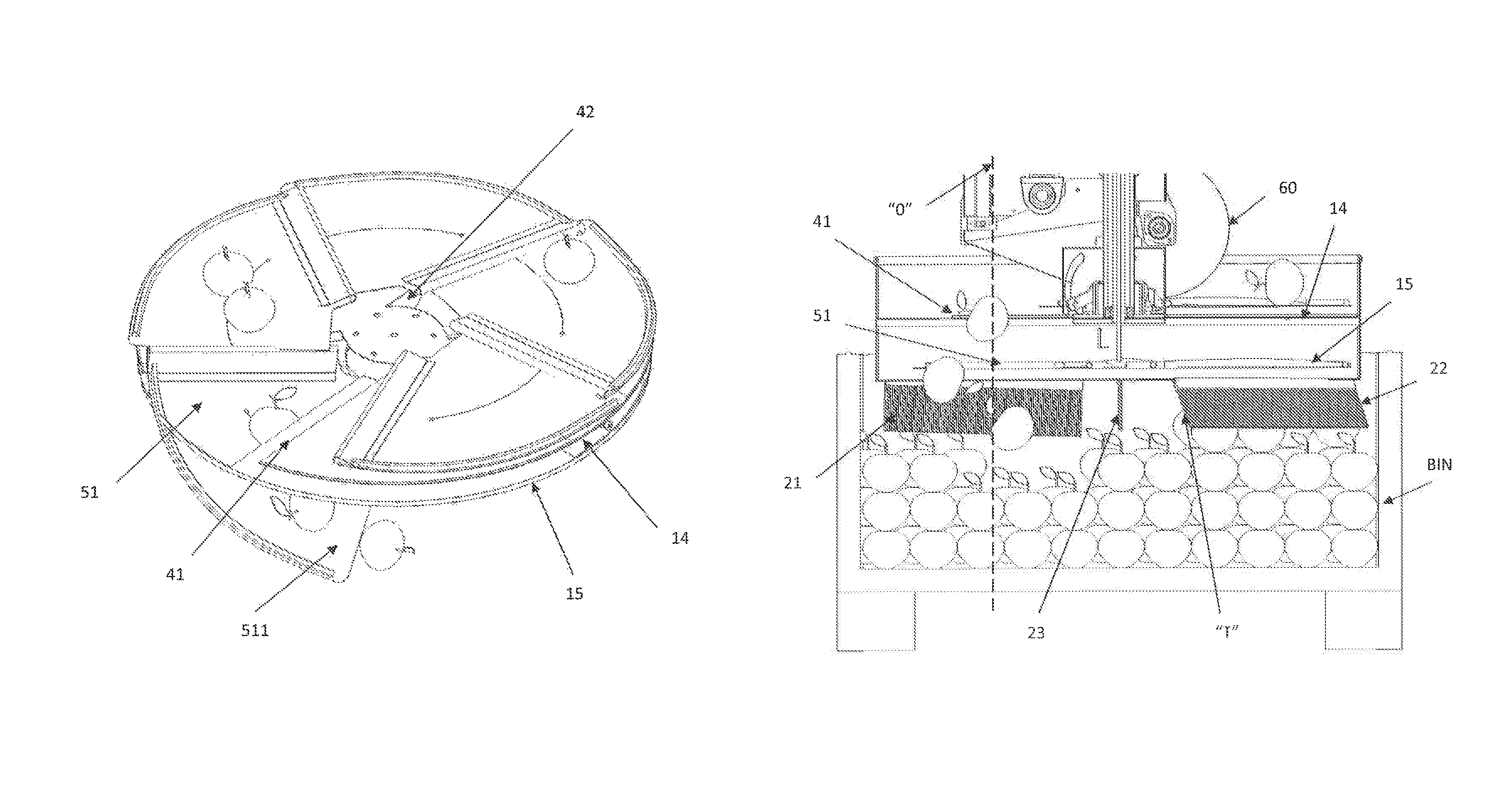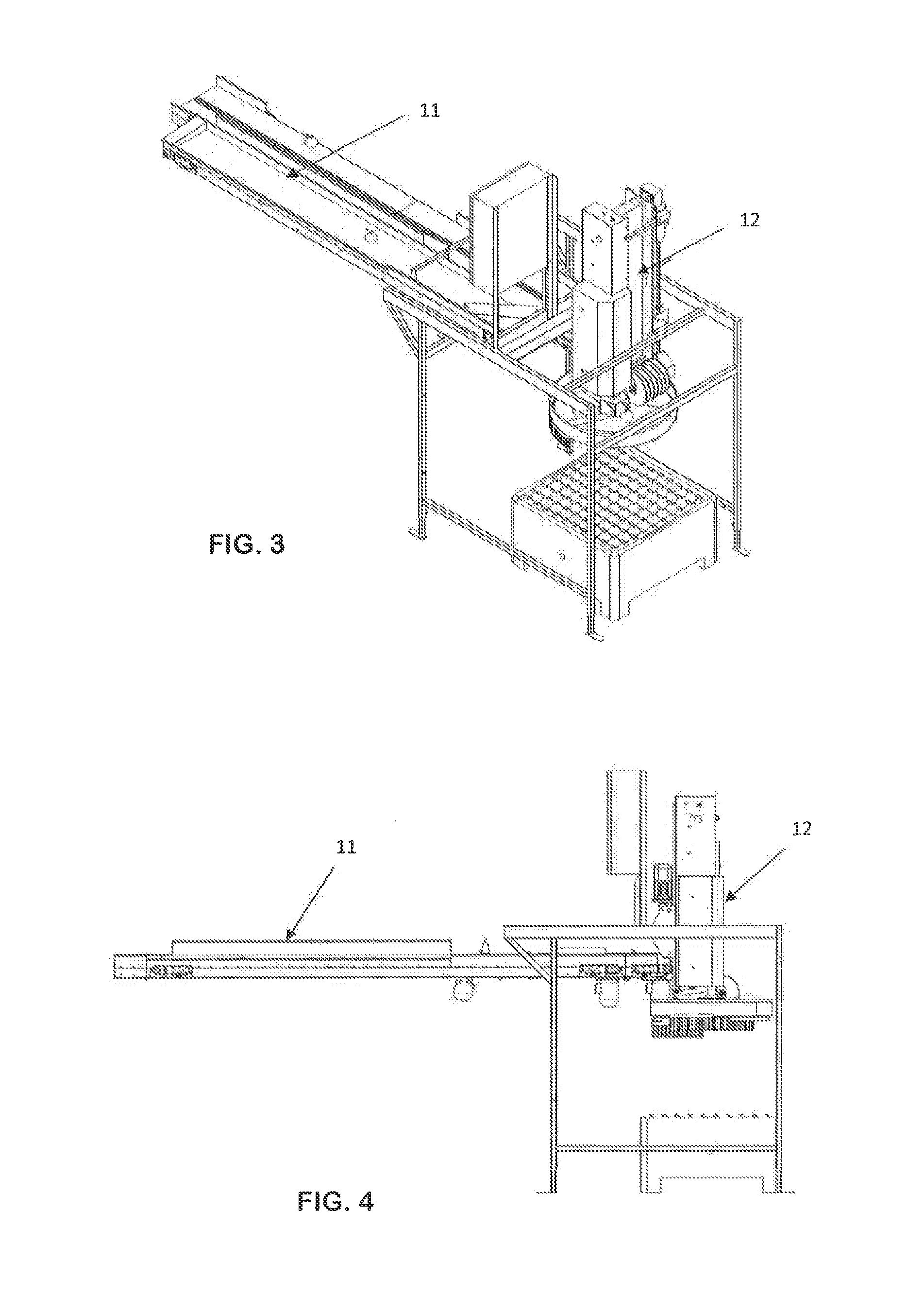System for dry-filling bins with vegetable products
a technology of vegetable products and bins, applied in special packaging, packaging, packaging, etc., can solve the problems of wasting energy, suffering a sort of “shaving” and thus damage, and not solving a further
- Summary
- Abstract
- Description
- Claims
- Application Information
AI Technical Summary
Benefits of technology
Problems solved by technology
Method used
Image
Examples
Embodiment Construction
[0052]With reference to FIG. 3, an apparatus for filling containers open at the top with products in bulk, preferably vegetable articles, and made according to the known art includes:[0053]a product feeding device, preferably realized by means of a first continuous and preferably sliding conveyor 11;
[0054]a bin filling head, disposed directly above them, which includes:[0055]a means 12, or “head” as it will be referred to hereafter, for lowering the individual products, preferably of belt type or a second conveyor suitable to engage the produce carried by said first conveyor 11, to move in a closed and substantially vertical loop, and provided with gripping or finger-like elements 13 suitable to engage said vegetable products in its upper portion and to carry them downward in a continuous vertical motion down to its lower portion, and to release them by gravity;[0056]a disk disposed under said lowering means 12, and consisting of two circular, coaxial plates 14, 15 superimposed on e...
PUM
| Property | Measurement | Unit |
|---|---|---|
| gravity | aaaaa | aaaaa |
| diameter | aaaaa | aaaaa |
| vertical distance | aaaaa | aaaaa |
Abstract
Description
Claims
Application Information
 Login to View More
Login to View More - R&D
- Intellectual Property
- Life Sciences
- Materials
- Tech Scout
- Unparalleled Data Quality
- Higher Quality Content
- 60% Fewer Hallucinations
Browse by: Latest US Patents, China's latest patents, Technical Efficacy Thesaurus, Application Domain, Technology Topic, Popular Technical Reports.
© 2025 PatSnap. All rights reserved.Legal|Privacy policy|Modern Slavery Act Transparency Statement|Sitemap|About US| Contact US: help@patsnap.com



